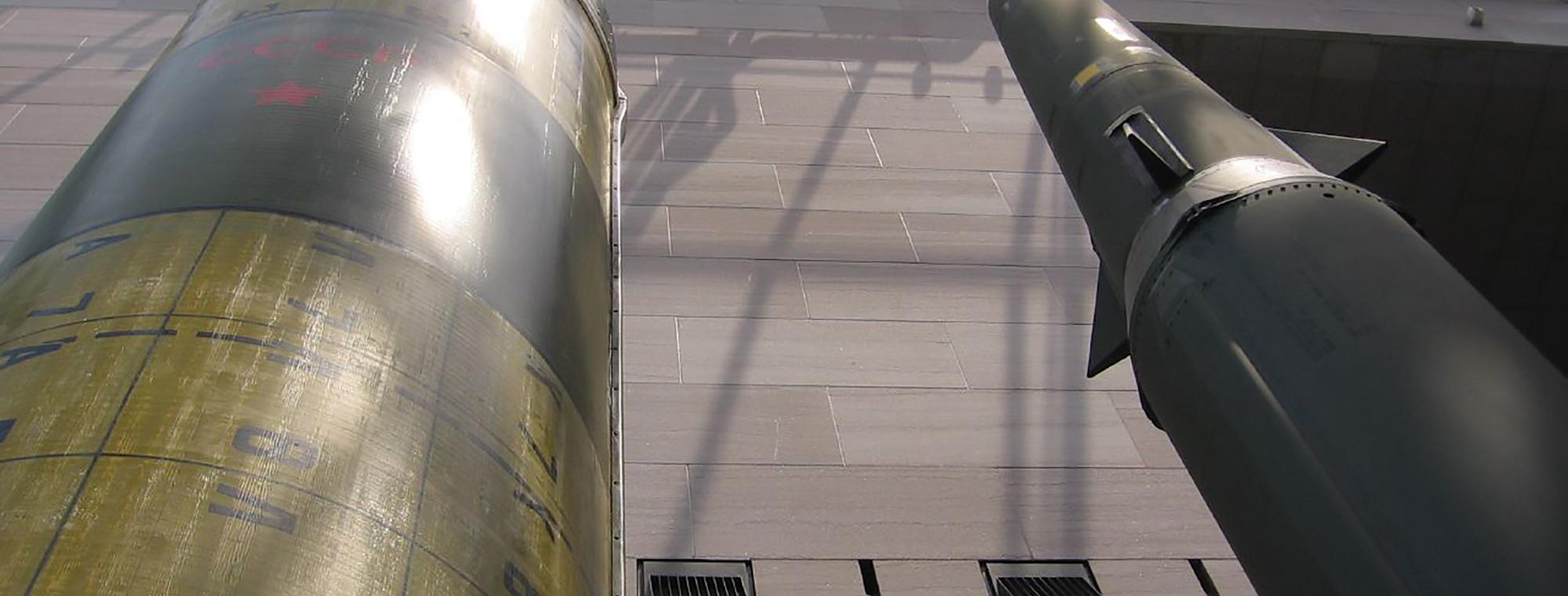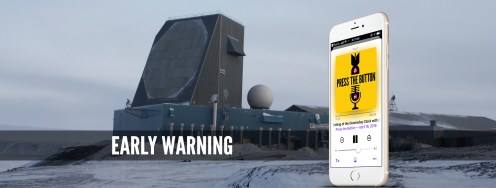Cold War throwback
“The horror and reactions to the Paris massacre have overshadowed a troubling new twist in the US-Russian rivalry that could prove even more terrifying,” warns Joe Cirincione in the Huffington Post. “Russian state media recently ‘accidentally’ revealed plans for a bizarre new nuclear torpedo… designed to swim 6,000 miles... It would detonate… a hydrogen bomb equal to a million tons of TNT or more but ‘salted’ with special metals to vastly increase the amount of radiation it would pour into a US port city.”
“The explosion would create a radioactive tsunami. The purpose, according to Russian TV, would be to devastate ‘the important components of the adversary's economy in a coastal area and [inflict] unacceptable damage to a country's territory by creating areas of wide radioactive contamination that would be unsuitable for military, economic or other activity for long periods of time’”
“We thought that such grotesque concepts had been buried with the Cold War, along with notions of doomsday machines… But unless Obama acts soon, his nuclear policy legacy may be the launch of a terrifying arms race that threatens destruction far beyond the horrors committed by ISIS."
Read Ploughshares Fund's president Joe Cirincione new piece on this insane and inhumane throwback to the worst designs of the Cold War in the Huffington Post.
The Pentagon’s spending binge
“Today, US and Russian forces still far exceed deterrence requirements [possessing 1,780 and some 1,900 nuclear warheads respectively deliverable] on several hundred strategic bombers and missiles,” writes Daryl Kimball for Arms Control Today. “Worse yet, both countries are pursuing a multi-decade nuclear weapons spending binge that promises to perpetuate excessive force levels and Cold War-era war-fighting capabilities for generations to come.”
“By the mid-2020s, the cost of nuclear weapons will consume 7 percent of the entire defense budget," according to Deputy Defense Secretary Robert Work "Obama can still use the time he has left in office to reduce the role and number of nuclear weapons by trimming back and in some cases forgoing redundant and costly nuclear weapons systems. By doing so, he would open the way to further reducing the role and size of US and Russian nuclear forces and to a safer and more secure future.”
Stop the arms race
“‘We’re now at the precipice, maybe I should say the brink, of a new nuclear arms race,’ [William J.] Perry, [US Secretary of Defense under President Bill Clinton], said at an event hosted by the Defense Writer’s Group. ‘This arms race will be at least as expensive as the arms race we had during the Cold War, which is a lot of money.’” He believes funding for the modernization for the nuclear triad 'is foolish when the US is both short of cash for other programs and capable of a robust nuclear deterrence already.'"
“‘Today, probably I would not have said this 10 years ago, but today we now face the kind of dangers of a nuclear event like we had during the Cold War, an accidental war,’ he said. ‘I see an imperative,’ Perry added, ‘to stop this damn nuclear arms race from accelerating again’... ICBMs ‘aren’t necessary … they’re not needed. Any reasonable definition of deterrence will not require that third leg,’” Perry concluded. Read the full story from Aaron Mehta at Defense News.
Too close for comfort
“Turkey’s downing of a Russian fighter jet could get very serious, very quickly. With America pledged to defend Turkey, our NATO ally, any shooting conflict with Russia could draw in the United States – and our 60 nuclear bombs stored just miles from the Syrian border… Accidents and miscalculations are bound to happen… and the inclusion of nuclear weapons on opposite sides of this engagement – Russia has 2,000 tactical nuclear weapons stored around the country — makes the margins for error uncomfortably small,” writes Geoff Wilson for War is Boring.
Hair trigger
The United States and Russia still keep many hundreds of nuclear warheads ready to launch on warning. President Obama and Vladimir Putin have mere minutes to decide if a blip on a radar screen means they should release Armageddon. Both countries militaries practice launching several times per week. Given the recent military encounters between the US and Russia, there is a growing risk that small escalations would drag the countries to the nuclear brink. In Politico, Bruce Blair lays out the problem and provides six policy recommendations for defusing the situation.
Close calls between nuclear powers
“As the USS Ronald Reagan aircraft carrier — nearly 100,000 tons of American military might — sailed through the Sea of Japan on Oct. 27, sailors on board suddenly noticed that two Russian Tu-142 Bear bombers were charging at the massive US warship. The Russian planes flew low, just 500 feet over the waves. The Reagan’s commander scrambled four Super Hornet fighter jets to chase away the Russian planes,” writes John Donnelly for Congressional Quarterly.
“There’s even talk in NATO of training, for the first time since the Cold War’s end, for scenarios in which conventional war turns nuclear… ‘But it is the possibility of a major transformative event, such as a midair collision or a skirmish along NATO or Russian borders, that is on the rise,’ says [an NTI] report. ‘Such an incident involving the world’s two largest nuclear powers could plausibly shift alert postures and lead to a rapid series of escalatory measures precipitated by miscalculation and exacerbated by mistrust.’” Read the full story in the Congressional Quarterly.
Roll back the Cold War talk
“A first strike with nuclear weapons in a conflict between the great powers is bound to be catastrophic,” writes Alexey Arbatov. “At a time when speculation on nuclear weapons use has increased Russia and the United States should restate their commitment to the nuclear war prevention on which they had agreed in the Cold War era… The nuclear war issues came back on people’s minds in the context of the Ukraine crisis, as references to the possible use of nuclear weapons have returned to Russia–NATO relations.”
“Despite large cuts in nuclear arsenals during the last quarter century, the underlying nuclear realities have remained unchanged since the Cold War and still require world leaders to display the same high level of responsibility. This is even more relevant when, in contrast to the Cold War era, Moscow and Washington have shared security interests and common enemies, in the form of international terrorism and religious extremism.” - Carnegie’s Moscow Center





